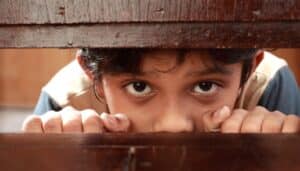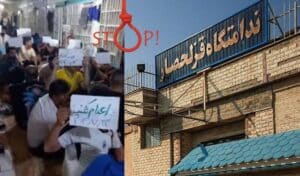Verein Welle, as part of its mission to protect human rights and advance environmental justice, has actively raised international awareness about this ongoing devastation. By documenting environmental crimes, supporting local voices, and advocating globally, Verein Welle aims to expose this ecological abuse and push for accountability. The organization also stands in solidarity with Iran’s environmental defenders—brave activists like Niloufar Bayani, Sepideh Kashani, and Morad Tahbaz, who have been imprisoned and tortured simply for trying to protect their country’s nature. Their unjust detention is a grim reminder that in Iran, even defending water, soil, and wildlife is treated as a threat to the regime.
Over the past 46 years of the Islamic Republic’s rule, not only have the individual, political, and social freedoms of Iranians been brutally repressed, but the country’s natural environment has also fallen victim to a systematic and deliberate onslaught of policies—policies that amount to nothing less than the ecocide of Iran. This silent catastrophe is as destructive and inhumane as the massacre of people, yet far less acknowledged on the global stage.The sheer scale of the environmental crisis in Iran has become undeniable—even acknowledged, at times, by the very officials of the regime. In 2015, Isa Kalantari, former Minister of Agriculture and head of the Department of Environment, warned: “If current trends continue, around 70% of Iranians—equivalent to 50 million people—will be forced to migrate to survive.”
Abdolreza Rahmani Fazli, then Minister of the Interior, described the water crisis in the summer of 2021 as a “major social crisis,” warning that within five years, climate-induced displacement would alter the face of Iran.
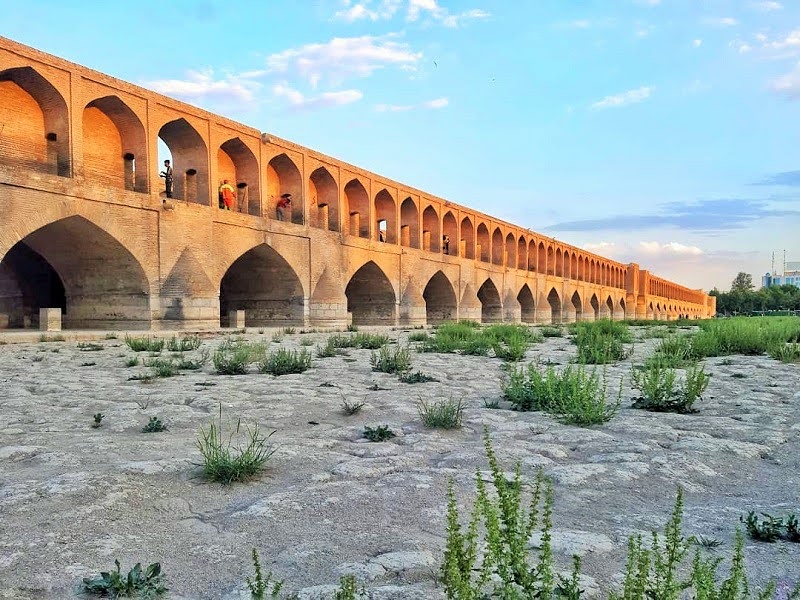
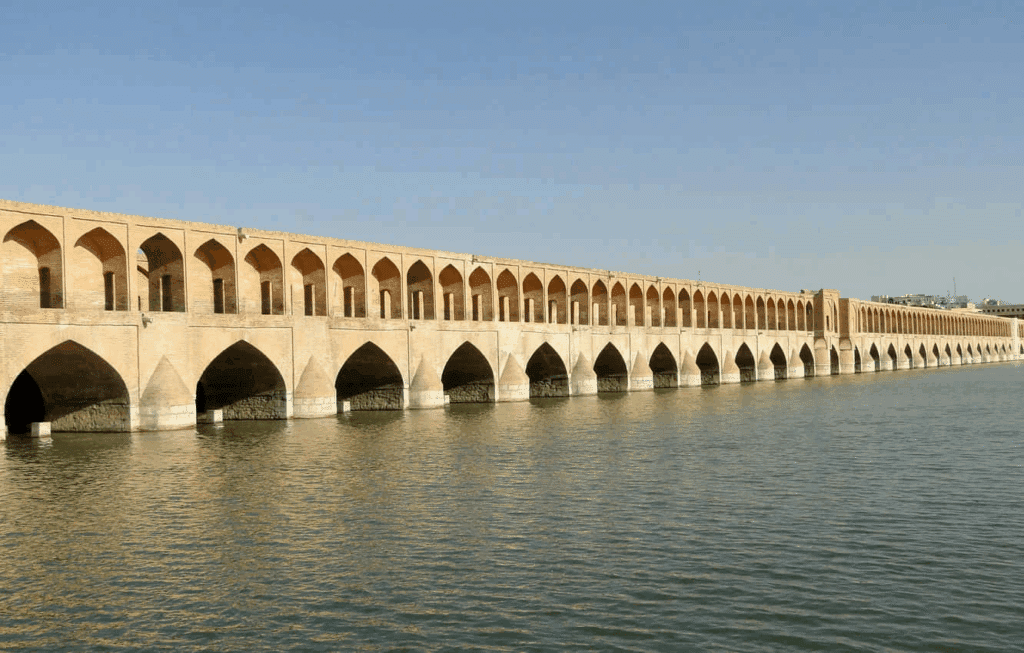
SioSe pol, before and after in Isfahan- Iran
Politics, corruption, and ecological collapse
To understand the root causes of Iran’s environmental degradation, one must examine the foundational logic of the ruling regime’s economic policies. In the Islamic Republic, everything serves a single, supreme goal: preserving the regime at all costs. Thus, the economy does not aim to generate public prosperity, but to ensure the security of the state. At least 60% of the country’s economy is directly controlled by Supreme Leader Ali Khamenei. The environment, like many other aspects of life in Iran, is one of the primary casualties of this framework.
A major driver of ecological destruction in Iran has been the regime’s massive and often reckless dam-building projects. Iran is now the third-largest dam-building country in the world. In 2007 alone, 88 dams were constructed. By 2016, Iran had 647 dams, 523 of which were classified as major dams.
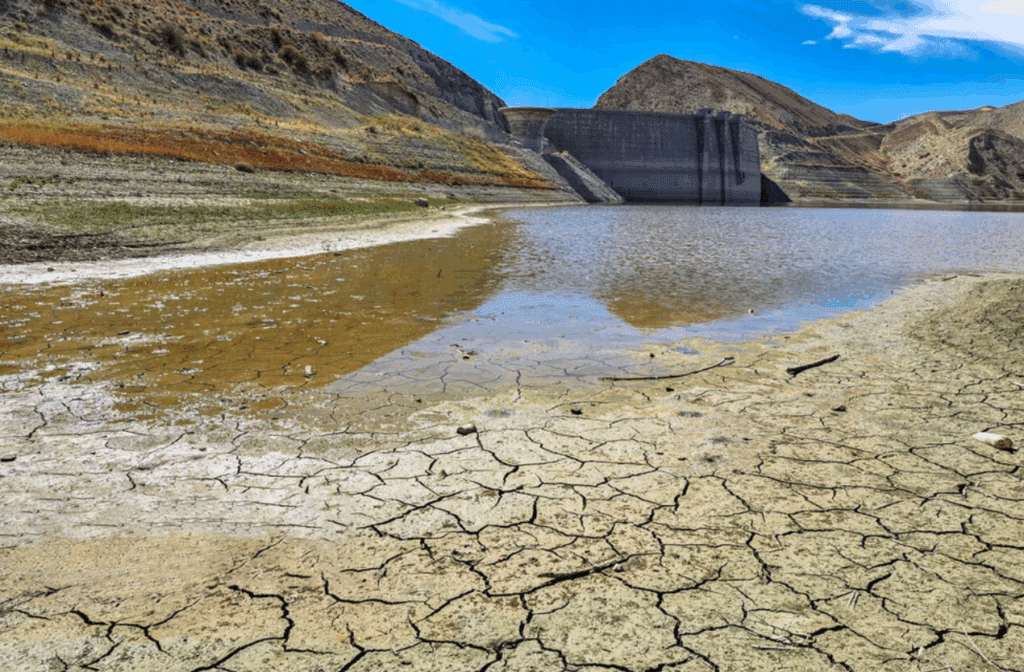
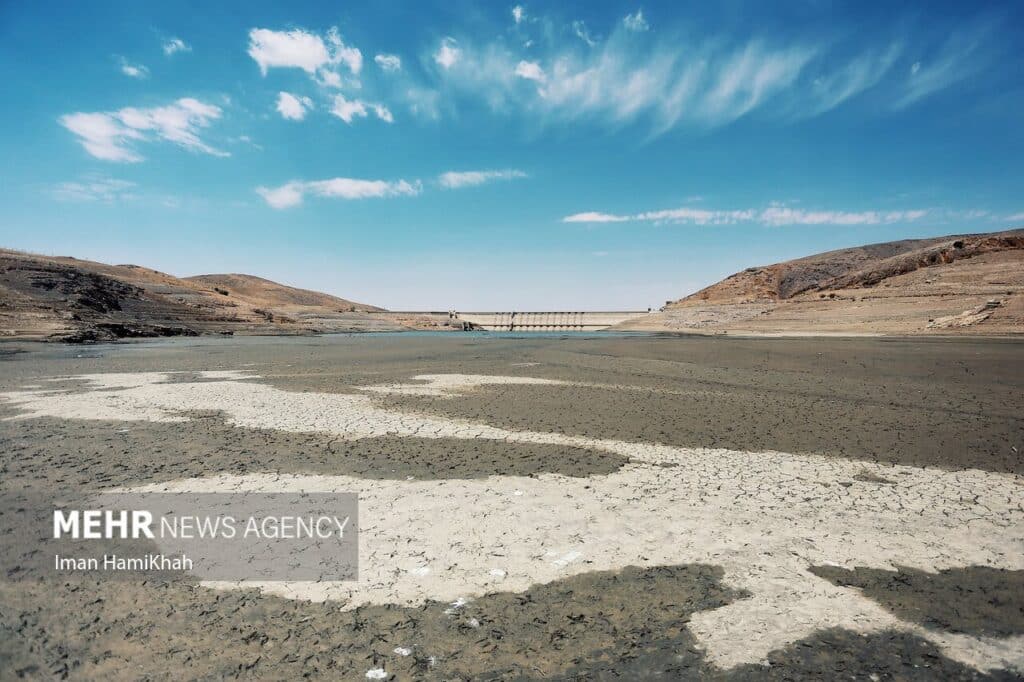
Dam construction—from planning to execution and maintenance—has become a continuous source of revenue for the Islamic Revolutionary Guard Corps (IRGC). One stark example is the Gotvand Dam project, built at a cost exceeding $3 billion by “Sepasad,” an IRGC-affiliated company. Despite overwhelming geological evidence of high concentrations of evaporite minerals in the region, the project proceeded without regard for the risks. The result: the reservoir’s water became saline due to contact with the Gachsaran formation, and now 420,000 hectares of downstream farmland—producing wheat, corn, and sugarcane—receive saline water, threatening both land and livelihoods.
Lake Urmia: the greatest victim
Once the second-largest saltwater lake in the world, Lake Urmia has now lost over 95% of its volume. Both official and independent sources identify unrestrained dam construction and water diversion for politically connected agricultural projects as the primary causes of this catastrophe. The drying of Lake Urmia has directly affected over six million people in the provinces of West and East Azerbaijan—through toxic dust storms, agricultural collapse, and forced migration.

By 2017, 74 dams had been constructed in the lake’s watershed. Moreover, there are an estimated 75,000 illegal wells in the area, posing a severe threat to this international wetland, in addition to the 35,519 legal wells already registered.
Several sources have implicated the IRGC in the construction of 57 dams in northwestern Iran, which are directly linked to 88% of Lake Urmia’s desiccation. Isa Kalantari warned that if the lake fully dries up, its salt storms could reach as far as 400 kilometers. “If Lake Urmia dies,” he said, “residents of Tabriz will eventually have to abandon the city; they won’t be able to withstand the salt storms for more than a decade. Relocating Tabriz may cost $500 billion.”
Dying wetlands and deserts in bloom
According to government sources, 42% of Iran’s wetlands have dried up, and one million hectares of natural land have turned into desert. This has caused land subsidence across 11% of the country.
Among the most grievous casualties is the Hoor al-Azim wetland in southern Iran. The IRGC has overseen the development of four oil fields and over 300 oil wells in this wetland, deliberately draining large sections for oil extraction. The result has been devastating dust storms and widespread respiratory illnesses among local communities.
Deforested lands and degraded soils
Iran’s forests are also being destroyed at an alarming rate. According to experts, if current trends continue, the country could lose all its forests within 50 years. In addition to widespread wildfires, illegal logging plays a major role, generating an estimated 50 trillion rials ($1 billion annually), a figure far too large to operate outside of state oversight.Government data reveals that 14% of Iran’s forests are located in the three northern provinces—yet these same provinces are home to 20% of the country’s real estate agents. Over the past 25 years, 33% of forest and pastureland in these provinces has been converted into housing and villas, many of which are owned by regime officials and their relatives.
The people resist
The first major protest over environmental issues dates back to 1996, when residents of Abadan and Khorramshahr took to the streets to protest water shortages. In the absence of independent media or advanced communications, detailed records of the protests are scarce—but some local accounts claim the regime opened fire on unarmed demonstrators, killing several.
Soon after, residents of Zanjan protested against pollution from a lead factory. In August 2011, thousands in Tabriz and Urmia demonstrated against the drying of Lake Urmia. Hundreds were beaten, arrested, and some sentenced to long prison terms.
In the summer of 2021, once again, people in Abadan and Khorramshahr rose up against water scarcity, and once again, the state responded with bullets. In a show of solidarity, residents of Tabriz also joined the protests.
Farmers in Isfahan have been protesting water mismanagement for years, yet their pleas are repeatedly met with hollow promises. They endure hardship and anguish as the great Zayandeh Rud River runs dry.
These and dozens—if not hundreds—of other demonstrations across Iran reflect a growing environmental awareness among Iranians and a deep-rooted desire for a livable, sustainable future.

“I want air” saying the banner raised by a woman in a demonstration in Iran.
Verein Welle’s commitment to action
In response to this ongoing ecological crisis, Verein Welle is taking urgent and concrete action—not only to expose the environmental crimes committed in Iran but to support those who risk everything to protect nature. Through publishing reports, launching international awareness campaigns, and building bridges with media and human rights organizations, Welle brings the silent destruction of Iran’s environment to global attention. The organization also runs emergency campaigns to defend imprisoned environmental heroes—courageous individuals who have been tortured or silenced simply for protecting water, forests, and wildlife.But we cannot do this alone. Your support makes it possible to speak up when others cannot. By donating, you help amplify their voices, sustain urgent campaigns, and provide protection to those in danger. Every contribution is a step toward justice—for people and for the planet.
Join us. Help us reclaim Iran’s nature
A scorched earth
Today, Iranians face a land stripped of its water, ravaged soil, burnt forests, and polluted skies. They are deprived of the most fundamental human right: a safe place to live. And this is not due to natural disasters such as floods, hurricanes, or volcanic eruptions—but as a result of deliberate state policies willing to sacrifice the nation’s resources for one more day of autocratic rule.
Iran’s environmental destruction is not merely an ecological crisis; it is a profound human rights violation. The collapse of natural ecosystems has deprived millions of people of their rights to health, water, housing, and even breathable air. Families who once lived in lush villages now reside on the outskirts of cities, without shelter, clean water, or employment. Respiratory diseases, depression, malnutrition, and deepening social inequality are the direct outcomes of this ecological devastation.
The Islamic Republic has not only brutalized its people—it has waged war on the very environment they depend on. This destruction is not accidental or born of ignorance; it is the inevitable result of medieval governance imposed on a land once known for its civilization and harmony with nature.
Call to action
As human rights activists, we have a duty to raise this disaster as a crime against humanity and nature before the international community. Verein Welle is at the forefront of this effort—documenting evidence of ecocide, building international coalitions, and relentlessly advocating for the protection of Iran’s environment and its defenders. Our campaigns amplify the voices of those silenced, bring pressure on global institutions, and push for accountability at every level.But this work needs you. You can help by sharing this story, supporting our campaigns, and donating to keep the movement alive. Every voice matters. Every contribution helps protect a forest, a river, or a life.
Stand with us. Raise your voice. Reclaim Iran’s nature
